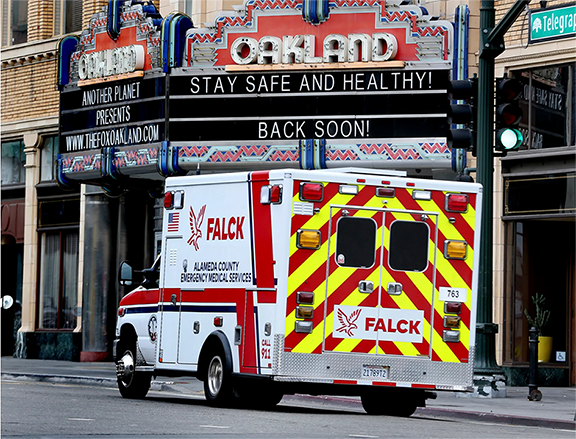The stringent adherence to established standards and protocols constitutes a cornerstone of operational excellence in public safety. Among these guiding principles, the National Fire Protection Association (NFPA) Standards serve as a revered compass, delineating the path to best practices within fire and emergency medical services (EMS). While these standards undeniably offer invaluable insights, they occasionally fall prey to misinterpretation, resulting in unforeseen consequences and unanticipated strains, particularly within the precincts of 911 dispatch centers. These misinterpretations may prevent public safety agencies from implementing programs that expand healthcare options for patients with low acuity illnesses or injuries, such as virtual care, and in-home patient management.
The Essence of NFPA Standards
NFPA Standards, epitomized by NFPA 1221, now grouped with NFPA 1225, function as the bedrock upon which the operational edifice of public safety, fire services, and EMS agencies is constructed. These standards are indispensable, ensuring uniformity and the highest echelons of service quality. Nevertheless, delving into the nuances is paramount, as misconstruing these Standards can engender operational hurdles.
NFPA 1225: Confusions Around NFPA
One prevalent area of perplexity revolves around NFPA Standard 1225. Some internal dispatch policies dictate that every emergency call must be dispatched within a stringent 60-second timeframe, which misrepresents NFPA 1225. A misunderstanding can thrust dispatch centers into unsafe processes that result in undue hardships.
It is incumbent upon us to decipher the genuine intent behind NFPA 1225. Contrary to a blanket approach, its essence lies in the expeditious processing and dispatching of high-priority emergency calls. This interpretation aligns seamlessly with the overarching objective of enhancing patient safety and optimizing patient outcomes.
Miscalibrated triage, wherein low-acuity calls are erroneously categorized as emergencies, risks misallocating precious resources. It is imperative to judiciously allocate resources, carefully considering the use of lights and sirens. NFPA underscores the importance of prudent call classification.
NFPA 1225 in Detail
NFPA 1225 furnishes meticulous guidelines:
- Emergency alarm processing for the most critical prioritization level emergency events should be dispatched within 60 seconds, attaining a success rate of 90 percent. These events encompass critical scenarios such as trauma, neurological emergencies, cardiac-related incidents, unconscious patients, allergic reactions, patients not breathing, choking episodes, and more.
- Calls bearing the potential for significant property loss or damage, including fires or explosions, also merit inclusion within the highest prioritization tier.
- Specific call types, like joint responses with law enforcement, hazardous materials incidents, instances necessitating emergency dispatcher pre-arrival instructions, and technical rescue missions, stand exempt from the stringent time constraints.
- A roster of mitigating circumstances, encompassing factors like language translation, TTY/TDD (Text Telephone/Telecommunication Device for the Deaf), incomplete location data, SMS messages to 911, calls emanating from beyond the standard service area, and calls amid significant disasters, merit exemption.
The Quandaries of Pre-Alerting
Pre-alerting, an operational tactic embraced by some public safety agencies, entails dispatching calls based solely on limited information—namely, the caller’s address, phone number, and a succinct emergency description. This process is often conceived to align with NFPA 1225 Standards. However, the indiscriminate application of this approach across all call types begets an array of issues. These encompass safety quandaries, unwarranted dispatcher stress, over-utilization of resources, and a heightened incidence of traffic accidents due to the excessive deployment of lights and sirens.
In certain exigent situations, such as incidents involving sinking vehicles, choking, fire entrapment, and more, the actions of the emergency dispatcher bear greater immediacy than those of field responders. In these instances, withholding vital pre-arrival instructions in the wake of acquiring location information may culminate in unfavorable outcomes. Public safety agencies have, regrettably, found themselves held liable for such incidents.
Prescriptions for Enhanced Clarity and Efficiency
To address these complexities and ensure the nuanced comprehension and application of NFPA Standards, the following actions are recommended:
- Thoroughly scrutinize NFPA Standards and their exceptions, disseminating these nuances to field providers and dispatchers.
- Collaborate synergistically with dispatch entities to meticulously ascertain which call types qualify for the stringent time requirements prescribed by NFPA Standards, with a pronounced focus on “highest prioritization level emergency events.”
- Discriminate discerningly between call types that align with stringent time requisites and those that do not, emphasizing non-emergent calls.
- Comprehensively grasp the capabilities of dispatch technologies and leverage them astutely to expedite call processing.
- Undertake a granular analysis of data to pinpoint areas amenable to enhancement in processing times for high-priority emergency events.
- Engage in collaborative endeavors with emergency dispatch protocol vendors, harnessing their capabilities to harmonize with NFPA Standards.
In summation, NFPA Standards constitute the bedrock of public safety operations; however, their precise comprehension and application are sine qua non to avert unwarranted encumbrances upon 911 dispatch centers. Pursuing clarity, effective communication, and a nuanced appreciation of these Standards form the cornerstone of simultaneous compliance and the optimization of emergency response endeavors.
APPENDICES
Appendix A: Works Cited
Hunt RC et al.: “Is ambulance transport time with lights and sirens faster than without?” Annals of Emergency Medicine 25(4):507-11, April 1995.
Fire Protection Research Foundation. NFPA. (2022). Retrieved 2022, from https://www.nfpa.org/News-and-Research/Resources/Fire-Protection-Research-Foundation
NFPA 1225: 15.4.4: Emergency event processing for the highest prioritization level emergency events listed in 15.4.4.1 through 15.4.4.2 shall be completed within 60 seconds, 90% of the time.
Nena Standard for 9-1-1 call processing. (2020). Retrieved 2022, from https://cdn.ymaws.com/www/nena.org/resource/resmgr/standards/nena-sta-020.1-2020_911_call.pdf





